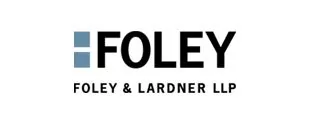Today the USPTO released its long-awaited package of rules for AIA post-grant proceedings. The final rules largely track the proposed rules (see " USPTO Proposes Extensive Changes to AIA Post-Grant Proceedings" to compare them), although they contain one surprise. Overall, the new rules may reduce the number of instituted IPRs and AIA proceedings by adding a new opportunity on the front end (pre-institution) for a patent owner to introduce newly created evidence or testimony to rebut a petitioner's case, though this is balanced by a petitioner's right to seek leave to reply to such new evidence and the PTAB's resolution of any genuine issue of material fact in the petitioner's favor.
When are they effective?
The notice states that "[t]his rule is effective May 2, 2016 and applies to all AIA petitions filed on or after the effective date and to any ongoing AIA preliminary proceeding or trial before the Office."
At a glance, what are the most important changes?
The Office revises 37 CFR 42.108(c) and 42.208(c) to indicate that the Board's decision will take into account a patent owner preliminary response where such a response is filed, including any testimonial evidence, but a genuine issue of material fact created by such testimonial evidence will be viewed in the light most favorable to the petitioner solely for purposes of deciding whether to institute an IPR or PGR.
A petitioner may seek leave to file a reply to the preliminary response in an IPR or PGR, but any such request must make a showing of good cause.
Parties will have longer to review oral hearing demonstratives – 7 business days instead of 5.
All parties to make Rule 11-type certifications on their papers. If violations are detected, motions for sanctions may be authorized.
New word count limits for many papers, including the petition,
which may effectively shorten the length to which some
practitioners have been accustomed.
Practice Tip For Preliminary Response
The most important change is the ability for a patent owner to present new evidence in a preliminary response. The ultimate impact of this will depend on the quality of evidence a patentee can generate within the 3 month period for filing a preliminary response, but it may potentially allow some patentees to prevent institution in situations where they otherwise would not be able to do so under existing rules, which bar the use of newly created testimony and evidence at the pre-institution stage. Given the short time period, patent owners who believe they have patents that may be targeted in AIA proceedings will want to consider lining up experts in advance and collecting evidence that may be useful to include in a preliminary response.
The Surprise: No Adoption of Pilot Program to Allow One APJ To Make Institution Decisions
The USPTO declined to adopt a pilot program earlier proposed that would have allowed a single APJ to make institution decisions in post-grant proceedings. Currently, the same 3-APJ panel who renders a final written decision together must make the institution decision. A single APJ determination of institution decisions would have allowed the USPTO to extend its capacity. However, after weighing comments received from the public, the USPTO did NOT adopt the pilot program at this time.
The content of this article is intended to provide a general guide to the subject matter. Specialist advice should be sought about your specific circumstances.


